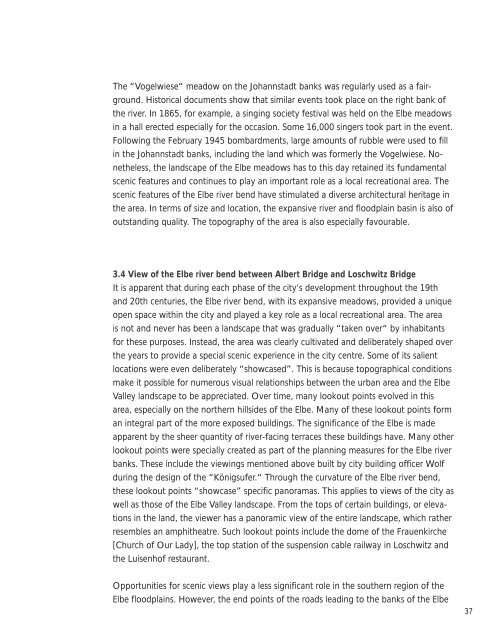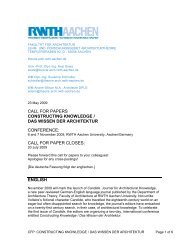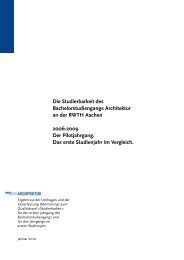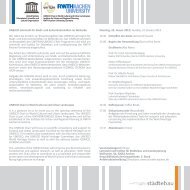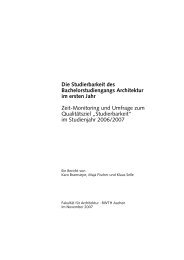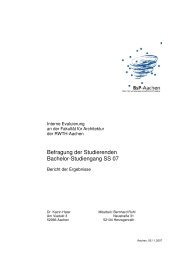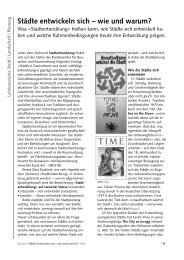Gutachten Dresden_englisch_dritte f.indd - Fakultät für Architektur ...
Gutachten Dresden_englisch_dritte f.indd - Fakultät für Architektur ...
Gutachten Dresden_englisch_dritte f.indd - Fakultät für Architektur ...
You also want an ePaper? Increase the reach of your titles
YUMPU automatically turns print PDFs into web optimized ePapers that Google loves.
The “Vogelwiese“ meadow on the Johannstadt banks was regularly used as a fair-<br />
ground. Historical documents show that similar events took place on the right bank of<br />
the river. In 1865, for example, a singing society festival was held on the Elbe meadows<br />
in a hall erected especially for the occasion. Some 16,000 singers took part in the event.<br />
Following the February 1945 bombardments, large amounts of rubble were used to fill<br />
in the Johannstadt banks, including the land which was formerly the Vogelwiese. No-<br />
netheless, the landscape of the Elbe meadows has to this day retained its fundamental<br />
scenic features and continues to play an important role as a local recreational area. The<br />
scenic features of the Elbe river bend have stimulated a diverse architectural heritage in<br />
the area. In terms of size and location, the expansive river and floodplain basin is also of<br />
outstanding quality. The topography of the area is also especially favourable.<br />
3.4 View of the Elbe river bend between Albert Bridge and Loschwitz Bridge<br />
It is apparent that during each phase of the city‘s development throughout the 19th<br />
and 20th centuries, the Elbe river bend, with its expansive meadows, provided a unique<br />
open space within the city and played a key role as a local recreational area. The area<br />
is not and never has been a landscape that was gradually “taken over“ by inhabitants<br />
for these purposes. Instead, the area was clearly cultivated and deliberately shaped over<br />
the years to provide a special scenic experience in the city centre. Some of its salient<br />
locations were even deliberately “showcased”. This is because topographical conditions<br />
make it possible for numerous visual relationships between the urban area and the Elbe<br />
Valley landscape to be appreciated. Over time, many lookout points evolved in this<br />
area, especially on the northern hillsides of the Elbe. Many of these lookout points form<br />
an integral part of the more exposed buildings. The significance of the Elbe is made<br />
apparent by the sheer quantity of river-facing terraces these buildings have. Many other<br />
lookout points were specially created as part of the planning measures for the Elbe river<br />
banks. These include the viewings mentioned above built by city building officer Wolf<br />
during the design of the “Königsufer.“ Through the curvature of the Elbe river bend,<br />
these lookout points “showcase” specific panoramas. This applies to views of the city as<br />
well as those of the Elbe Valley landscape. From the tops of certain buildings, or eleva-<br />
tions in the land, the viewer has a panoramic view of the entire landscape, which rather<br />
resembles an amphitheatre. Such lookout points include the dome of the Frauenkirche<br />
[Church of Our Lady], the top station of the suspension cable railway in Loschwitz and<br />
the Luisenhof restaurant.<br />
Opportunities for scenic views play a less significant role in the southern region of the<br />
Elbe floodplains. However, the end points of the roads leading to the banks of the Elbe<br />
37


